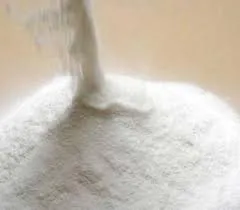
نوامبر . 01, 2024 13:49 Back to list
An Overview of Hydroxypropyl Methyl Cellulose Uses and Applications in Various Industries
Understanding HPMC Hydroxypropyl Methyl Cellulose
Hydroxypropyl Methyl Cellulose (HPMC) is a versatile and widely used cellulose ether that has found applications in various industries, including pharmaceuticals, food, cosmetics, and construction. It is a non-ionic compound derived from cellulose, a natural polymer obtained from plant materials. HPMC is created by substituting hydroxyl groups in the cellulose structure with hydroxypropyl and methyl groups, which modifies its solubility and functionality.
Understanding HPMC Hydroxypropyl Methyl Cellulose
In the food industry, HPMC serves as an emulsifier, thickening agent, and stabilizer. It is commonly used in gluten-free baking as it helps to give the elasticity and texture often missing in gluten-free products. Additionally, HPMC acts as a fat replacer, making it valuable in low-fat and reduced-calorie products. Its ability to retain moisture further enhances the quality and shelf life of food items, providing a pleasant texture and mouthfeel that is often sought after by consumers.
hpmc hydroxypropyl methyl cellulose

In the cosmetics industry, HPMC is valued for its thickening and film-forming properties. It is used in a variety of products, from lotions to hair care items, where it helps improve stability and viscosity. Furthermore, HPMC provides a smooth application and enhances the spreadability of cosmetic formulations, making it a popular choice among formulators.
In the construction sector, HPMC is used in cement and mortar as a water-retaining agent. It improves workability, reduces shrinkage, and enhances the overall mechanical properties of the end product. The incorporation of HPMC in building materials helps improve adhesion and provides a longer open time, making it easier for contractors to work with.
Despite its numerous applications, the production and usage of HPMC require careful handling and adherence to regulatory standards. Its versatility and effectiveness make it an essential ingredient across various industries. As research in this field continues, the potential uses of Hydroxypropyl Methyl Cellulose are likely to expand, reinforcing its status as a crucial component in modern manufacturing processes.
In conclusion, Hydroxypropyl Methyl Cellulose is an invaluable material with applications ranging from pharmaceuticals to food processing and construction. Its unique properties and adaptability not only enhance product performance but also contribute to consumer satisfaction and safety. As industries evolve, HPMC will undoubtedly remain a cornerstone of innovation across multiple sectors.
-
What is HPMC?
NewsJun.06,2025
-
Understanding Redispersible Powder: The Future of Construction Materials
NewsJun.06,2025
-
Understanding RDP Powder: The Ultimate Solution for Your Construction Needs
NewsJun.06,2025
-
Pure HPMC: The Ideal Solution for Modern Construction and Building Materials
NewsJun.06,2025
-
Methyl Hydroxyethyl Cellulose: A Versatile Chemical Compound
NewsJun.06,2025
-
Hydroxyethyl Cellulose Power: The Essential Chemical for Various Industries
NewsJun.06,2025







